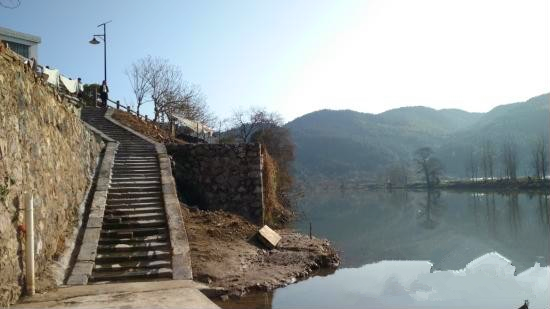Qing Dynasty Wharf Site Discovered in Beihu District

On January 23rd, Beihu District Cultural Relics Management Institute discovered a wharf site of Qing Dynasty when carried out the heritage survey in Maoping Village, Huatang Town.
The responsible person from Beihu District Cultural Relics Management Institute introduced that the discovered wharf site is located on the west side of Maoping Village, which is made up of platform, inscription and steps, and the preservation is basically finished. From the platform up, there are 45 steps of bluestone, divided into two sections, and 7 inscriptions with clear handwriting, in which the earliest piece carved in the six-year Yongzheng (1728) and the latest piece carved in the four-year Tongzhi (1865), recording in detail the experience of the believers in the village of donating rice and building wharfs many times.
The discovery of the Qing Dynasty wharf site in Maoping Village has a certain value for studying the production and life of local people, the rural governance and the water transport trade culture in Qing Dynasty. At present, the relevant departments in Beihu District have taken measures to strengthen the protection of wharf sites.




